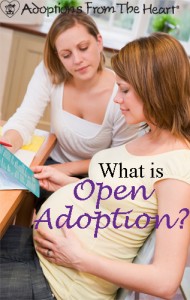 Almost everyone involved in adoption today – adoptive parents, birth parents, adoptees, and adoption professional’s embrace that almost every aspect of adoption is different than it was in the past.
Almost everyone involved in adoption today – adoptive parents, birth parents, adoptees, and adoption professional’s embrace that almost every aspect of adoption is different than it was in the past.
The family-matching process surrounding open adoption is a relatively unique and modern concept. Expecting parents are empowered to choose which family will adopt their child instead of social workers making that decision. Birthparents are also able to decide their preference about receiving updated photos and letters, as well as the frequency of visits after placement.
Instead of adopting a child without any medical or family history, open adoption encourages the exchange of information as well as continued contact after placement, which has been proven to benefit the birthparents, adoptive parents and also the adoptees. Birth parents are reassured that their child will be well cared for and adopted children can get answers to questions that arise over the years about the circumstances regarding their placement.
Misconceptions Associated with the Adoption Process
Below are some common misconceptions associated with the adoption process.
Even though adoption has changed drastically over the years, the awareness and perspective of the outside community hasn’t necessarily kept pace with these changes.
Adoption was once seen as a taboo and very rarely talked about. Now that adoption is becoming more mainstream and 1 in 5 Americans is directly touched by adoption in some way, it is time to put many of these misconceptions to rest.
Myth: Adoption agencies “talk” pregnant women into placing their babies for adoption.
Correction: Adoption agencies are regulated and monitored in order to ensure ethical practices. They are there to provide information, counseling, and support for pregnant women who come to them seeking options for their future child.
An adoption agency’s goal is to help expecting parents make the choice they decide is best for them and their baby – not to make the choice for them. Agencies also provide counseling and support during and after the process.
They are not meant to persuade or influence expecting parents, but rather to present an education about adoption as another route that may be chosen and then walking them through that option step by step.
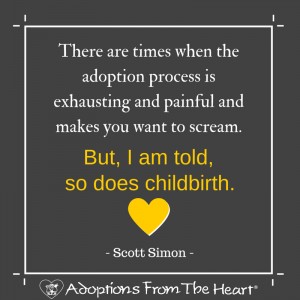
Myth: The risks associated with adoption are too high; it’s too much to invest in for there to be no certainty.
Correction: According to Building Your Family, an online adoption publication, more than 18,000 American families successfully adopt newborn babies each year in the United States, and the typical family successfully adopts a child within two years of beginning the process.
The average cost for domestic infant adoption ranges between $20,000 to $40,000. Costs can total considerably more in certain circumstances.
There are many ways families can offset the cost of the adoption process including the federal adoption tax credit, grants and loans, etc. Adoptions From the Heart’s expenses flyer will help answer any questions surrounding financial situations and planning.
There are indeed risks associated with adoption; however, society is shown the most dramatized adoption stories created for television. These however are not the majority.
It is important to first find a reputable agency. Then be sure to ask plenty of questions to be sure they are the right fit for your needs. Follow this link to read questions and answers about Adoptions From the Heart as an agency. But regardless of the agency – use these questions as a guide, they will be useful as you search for a place that you trust on your journey to adopt.
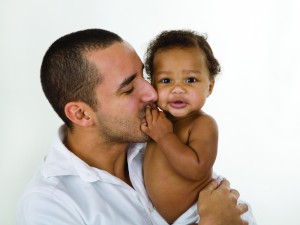 Myth: The birthfather doesn’t get a say because he isn’t as important as the mother, and couldn’t possibly care as much.
Myth: The birthfather doesn’t get a say because he isn’t as important as the mother, and couldn’t possibly care as much.
Correction: A lack of birthfather involvement does not necessarily reflect a lack of concern. Birthfathers are often unsure about their role, and given the opportunity to have a voice and receive support, they often become involved in the process.
However, every story is different, and the best way to expunge this myth is to talk to your partner openly throughout the process. It is vital for birthfathers to realize that they have rights and can be involved in the adoption plan as well as have visits and receive updates. Click here to read more about how Adoptions From the Heart includes birth fathers in the adoption process and ensures they have a voice.
Myth: Open adoptions constitute co-parenting.
Correction: Open adoption is not co-parenting. There is a big difference between biological parenting and adoptive parenting. The reality is that the child has two sets of parents – the ones who gave birth to them, and the ones who are parenting them.
In most cases, before the child is born or the adoption is finalized, the families agree to a mutually acceptable level of contact.
Since each adoption is a unique situation – though there is no “typical” scenario, many let their contact evolve as the child grows and matures. Despite the final decision of communication many parents recognize that their child benefits from an on-going relationship with birth relatives. Trust, respect, and care are essential between birth and adoptive parents. On the whole, there is a movement toward greater openness by all parties.
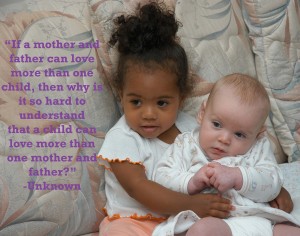 Myth: If a child is placed in an adoption, they will always be caught in the middle of two different lives.
Myth: If a child is placed in an adoption, they will always be caught in the middle of two different lives.
Correction: Open adoption allows birth parents to have a role in their child’s life and the chance to see their child grow and thrive in a family best suited for their overall health and happiness.
Open adoption does allow birth mothers to have more control; today, families who’ve adopted often say that any initial concern about the role of birth parents in their child’s lives has been replaced by gratitude for the opportunity to know their child’s family of origin.
Communication between the two families is critical to the child’s positive mental health over the course of their life, but ongoing contact is also one of the most difficult hurdles people face in open adoption. The truth is that adopted children fare better when they are introduced to their root. It brings answers to their questions, and instead of becoming obsessed with unanswered questions and abstract concepts they gain tangible answers.
Helping Turn Myths into Truths
Nearly 60 percent of Americans have had personal experience with adoption. Whether they have a close family member or friend that was adopted, adopted a child or placed a child for adoption. And yet, there are many misconceptions about adoption that trouble both prospective birth parents and adoptive families.
Breaking down these stereotypes surrounding the circumstances of adoption, which have little societal support, will help the world better understand the process and empathize with families, birthparents and adoptees. To read more about open adoption and familiarize yourself and the people around you, check out some of these helpful resources.


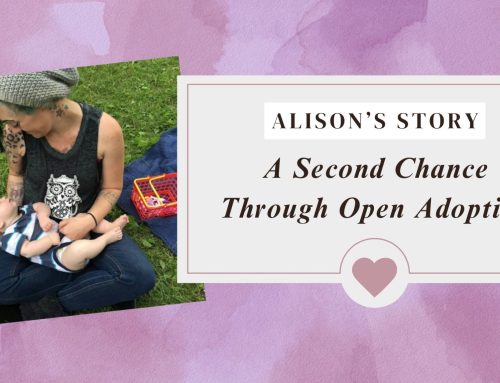
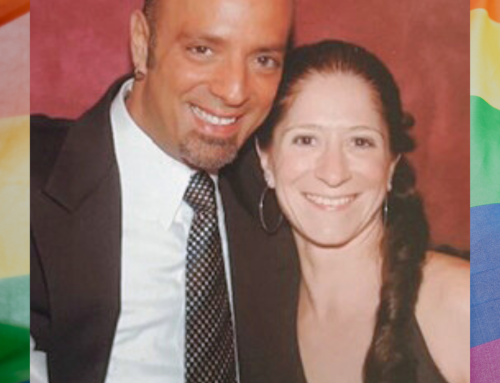

I am glad that you mentioned that open adoption is not co-parenting. My sister is considering open adoption, and I will certainly share this information with her. It would be smart for her to contact a professional who can help her to understand all her adoption options.